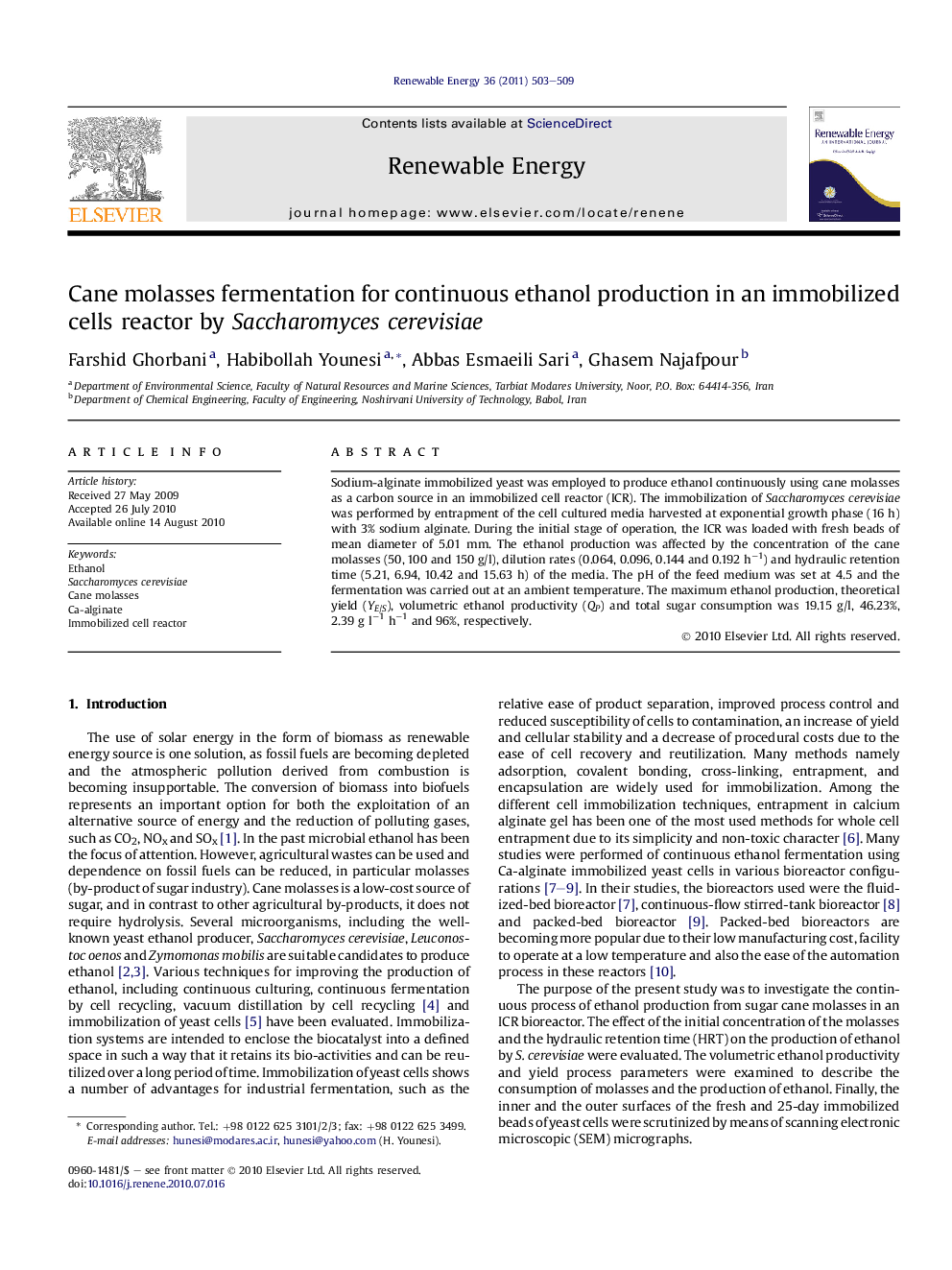| Article ID | Journal | Published Year | Pages | File Type |
|---|---|---|---|---|
| 301611 | Renewable Energy | 2011 | 7 Pages |
Sodium-alginate immobilized yeast was employed to produce ethanol continuously using cane molasses as a carbon source in an immobilized cell reactor (ICR). The immobilization of Saccharomyces cerevisiae was performed by entrapment of the cell cultured media harvested at exponential growth phase (16 h) with 3% sodium alginate. During the initial stage of operation, the ICR was loaded with fresh beads of mean diameter of 5.01 mm. The ethanol production was affected by the concentration of the cane molasses (50, 100 and 150 g/l), dilution rates (0.064, 0.096, 0.144 and 0.192 h−1) and hydraulic retention time (5.21, 6.94, 10.42 and 15.63 h) of the media. The pH of the feed medium was set at 4.5 and the fermentation was carried out at an ambient temperature. The maximum ethanol production, theoretical yield (YE/S), volumetric ethanol productivity (QP) and total sugar consumption was 19.15 g/l, 46.23%, 2.39 g l−1 h−1 and 96%, respectively.
